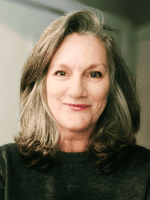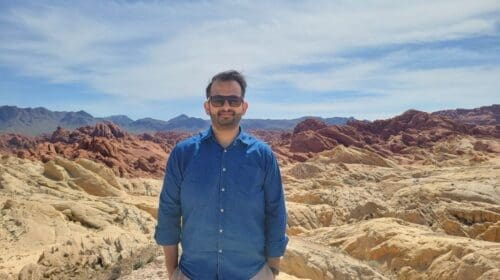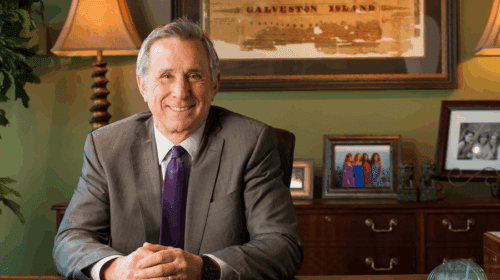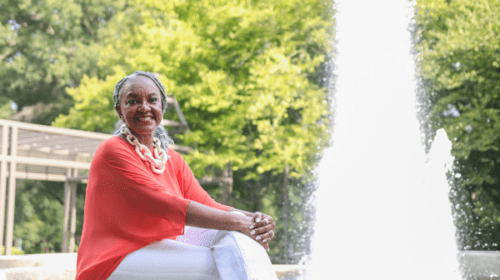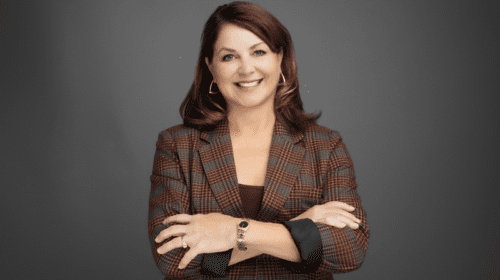As a landman, I have always given the Reader’s Digest version of what I do as “part genealogist and part detective,” so it resonated with me when I came across the following explanation on the Professional Land Surveyors of Colorado site, describing a surveyor as “part archeolog[ist] and part private investigator.” A landman’s goal is to determine ownership of the surface and mineral rights – often with the help of a survey, which has been drawn up by a surveyor based on, in this case, her determination of the property “metes and bounds” or boundaries.
Anthropologist, ethnologist and social scientist Alice Cunningham Fletcher (known as the “Measuring Woman”), whose now controversial work determining allotments of Native American lands in the late 1800s, is acknowledged as the first American woman surveyor, but like other sectors of the oil and gas industry, female surveyors are in the minority, currently comprising only about six percent of the workforce. The numbers are even lower for women who are members of another minority group.
Noela Oliveira Garza broke both the barrier of being a woman and being a member of a minority group to carry on a family tradition of building a successful career as a surveyor. She followed in the footsteps of her beloved father, Horacio Oliveira, and now her younger son, Chris Garza, is a third-generation surveyor who, like his abuelo, is a Registered Professional Land Surveyor (RPLS).
While Garza was a Texas-certified Surveyor in Training, life’s circumstances prevented her from taking the RPLS exam, but did not keep her from directing the surveying services as the owner of Bullseye Land Surveying Company in Corpus Christi, Texas, until her retirement a few years ago. Garza continues her goal of developing future surveyors by being a member of the Academic Advisory Committee for Geospatial Surveying Engineering at Texas A&M University – Corpus Christi, where she and several other members of the oil and gas community serve to make sure that the courses taught create highly qualified land surveyors.
Rebecca Ponton: What was your education and professional background prior to working in the surveying industry? What interested you about surveying work?
Noela Oliveira Garza: Working with my father, Horacio Oliveira, got me interested in the surveying world, but I was married with two children at the time, so I just worked various jobs that would supplement my husband’s income. In 1994, my husband became gravely ill. His prognosis was not good, and I had our children to raise, so I decided to go back to school.
Texas A&M University – Corpus Christi had just created a bachelor’s degree program in geographic information science. It had two facets to the degree: geomatics (land surveying) and geographic information systems. Because of my love for land surveying, I chose the geomatics emphasis, and graduated in 1999 at the age of 48. I was one of the first four students to graduate from that program. I later got my master’s degree in geospatial surveying engineering from the same school in 2008 at 58 years old. (A sure sign that it’s never too late to fulfill your dreams!)
As a former chair and member of the Academic Advisory Council for the Geospatial Engineering Program at Texas A&M University – Corpus Christi, I am still involved with the educational endeavors of students in this field, along with 12 other individuals in various facets of oil and gas, including oil producers, survey companies, public utilities and mapping software.

RP: Please talk about the founding of your company.
NG: In 2007, I started working with a Norwegian-based surveying company that wanted to open an office in South Texas. Its focus was on laser scanning. I began investing in the company to bring in land surveying as well, and eventually became owner and president of the company.
RP: Was your company certified woman or minority owned or both?
NG: Bullseye Land Surveying Company was certified under the State of Texas Historically Underutilized Business (HUB) Program because I was 100 percent the owner, and therefore it was both woman-owned and minority-owned. The State doesn’t really designate which one on the certificate, but I’m sure both were considered as qualifying for the certification.
RP: How were you received as a woman in the oil and gas industry at that time? Did you know other women surveyors?
NG: Since my father had been a surveyor for over 50 years in the area, and I had worked with him, I was already well accepted by my peers. I knew one other woman surveyor, Jamie Pyle, and she was an inspiration for me to get licensed. Although I passed my test as a Surveyor in Training, after taking ownership of the company, I never had time to attempt to take the licensing exam to be a registered professional land surveyor. Owning and managing the company was a full-time job.
RP: Talk about what your job entailed. What was the most difficult aspect of it? And, what was the most rewarding time in your career?
NG: My job was to manage the business, both administration and operations, and market it. I think the most difficult part was getting those big contracts that everyone wants. Your company may have enough expertise, but sometimes not enough crews. And you need the guaranteed jobs to hire those crews, so it was a catch-22 situation.
The most rewarding time in my career was working with the crews. Employees have multiple personalities and problems, but they knew that I would not have them do anything that was detrimental to their careers or their safety. They knew I had their backs, and they had mine. Even after being retired for five years, I still get calls from them.
RP: What was the most memorable job Bullseye Land Surveying Company ever secured?
NG: I would rather not mention any client names, but it was a pipeline job that made us more money in a month than we were used to making in a year.
RP: As you said, this was in the early ‘90s. Did you have mentors or anyone to guide you?
NG: My biggest mentor was my father. He was the first Hispanic that had gotten his license by taking his RPLS test. There were others that had been grandfathered in, perhaps because they were engineers, but my dad was the first to get in by actually passing the test. He was a legend and an excellent land surveyor. It was because of him that I wanted to get my license, and it was because of him that I have a son that is an RPLS and works for one of the largest survey companies in the country.
RP: What educational background is most beneficial for someone who wants to get into the surveying industry? How advantageous is it to become certified like your dad and son?
NG: Last I heard, there were very few schools that offer a degree or even certification classes in Geospatial Surveying Engineering. In Texas, a four-year degree is no longer required to be an RPLS. That is a shame, but part of it may be that there is a severe shortage of registered professional land surveyors available.
I spoke with Rick Smith, the Executive Director of the Conrad Blucher Institute for Surveying and Science at Texas A&M University – Corpus Christi. He said there are now three ways to qualify to sit for the RPLS exam:
- Having a bachelor’s degree in geospatial surveying engineering or an equivalent field. (I believe that Texas A&M University – Corpus Christi is one of very few in the nation that offers this degree.)
- Possessing an associate degree in surveying courses (usually offered at very few junior colleges), plus two years of experience in surveying.
- Having a high school diploma, along with six years of surveying experience, and evidence of self-teaching.
In my opinion, it is most advantageous to get the four-year degree. It provides a lot more than technical training, and it allows a student to work with their peers who have the same goals, providing a camaraderie that lasts into their working career. I also believe that having the degree will allow a graduate to move up faster within a company into an executive position for both project and people management.
RP: What advice would you give other women about starting their own business, whether in surveying or another field?
NG: Always prepare for the slow times, especially at the beginning of your business. Have enough money to last a minimum of a year, and preferably two. Take care of your employees and they will take care of you.
RP: Do you have any memorable anecdotes about your time in the industry?
NG: Before all the new technology, we kept a huge calendar on the wall of the office that had some work schedules and approved employee vacations. In 2012, there were rumors that the world would end on December 21st, because the Mayan calendar was ending. One of our employees wrote, “Although the world is supposed to end on December 21, 2012, Bullseye employees will not be given time off until December 24th and 25th. The Mayan calendar might end, but the Bullseye Land Surveying calendar moves forward.”
Being a female boss with all-male crews, women may be overly concerned about their roles in a “man’s world.” It is important not to react quickly without thinking first. I had just hired a crew from the valley and many of them spoke Spanish, as do I. One day, one of the guys called me “jefa” (pronounced “heffa” and meaning “boss lady”). I misheard him and thought he had said “heifer.” The party chief came to ask me why I had an angry look on my face, and I told him what I thought I had heard. He started to laugh and said, “He is calling you “jefa” out of respect, Miss.” We both had a good laugh about that, but I insisted that from then on, they were not to call me “boss” in any language, but rather by my first name.
Reprinted with permission. A shorter, condensed version of this article originally appeared in the Winter 2024 issue of NAPE Magazine. Additional material has been included in this version, which has been lightly edited in keeping with this magazine’s style guide.
Headline photo: Noela Oliveira Garza built a successful career as a surveyor after following in the footsteps of her father, Horacio Oliveira. Photos courtesy of Noela Oliveira Garza.
Rebecca Ponton has been a journalist for 30+ years and is also a petroleum landman. She is the author of Breaking the GAS Ceiling: Women in the Offshore Oil and Gas Industry (Modern History Press; May 2019). She is also the publisher of Books & Recovery.
Oil and gas operations are commonly found in remote locations far from company headquarters. Now, it's possible to monitor pump operations, collate and analyze seismic data, and track employees around the world from almost anywhere. Whether employees are in the office or in the field, the internet and related applications enable a greater multidirectional flow of information – and control – than ever before.


